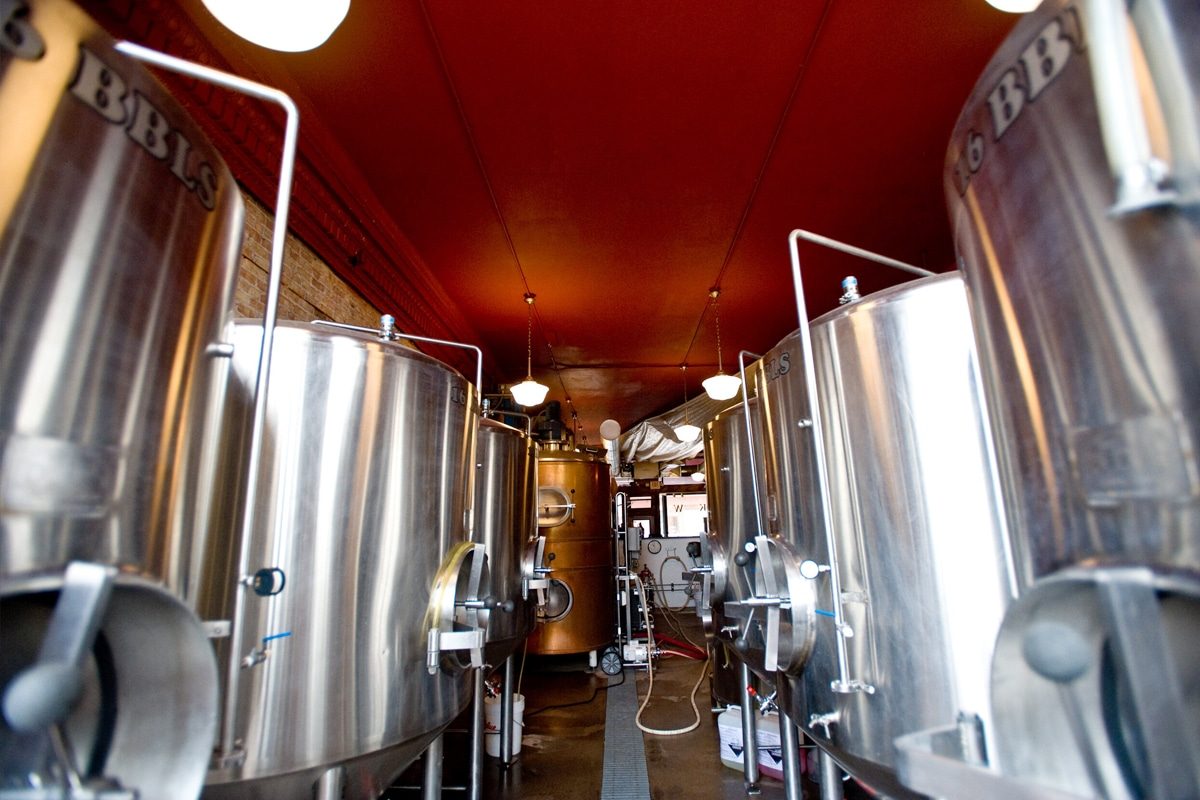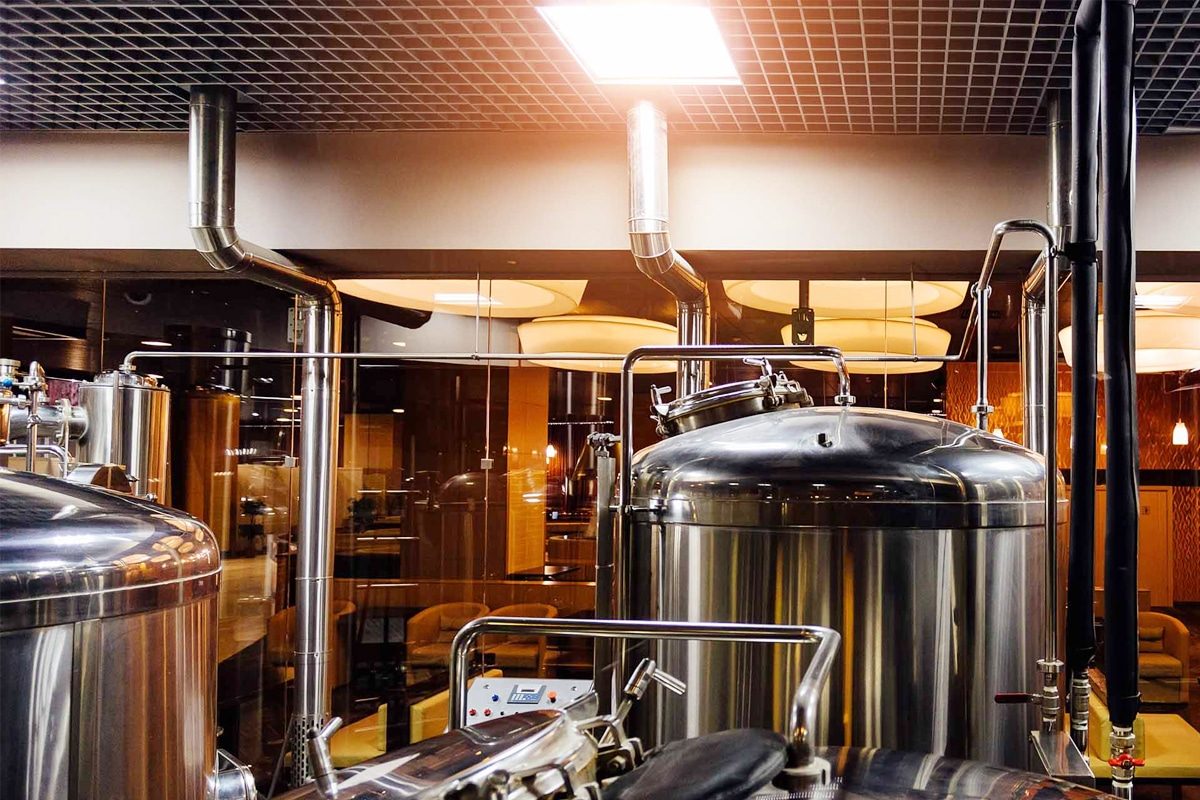
Brewery Business Plan Guide In 2024
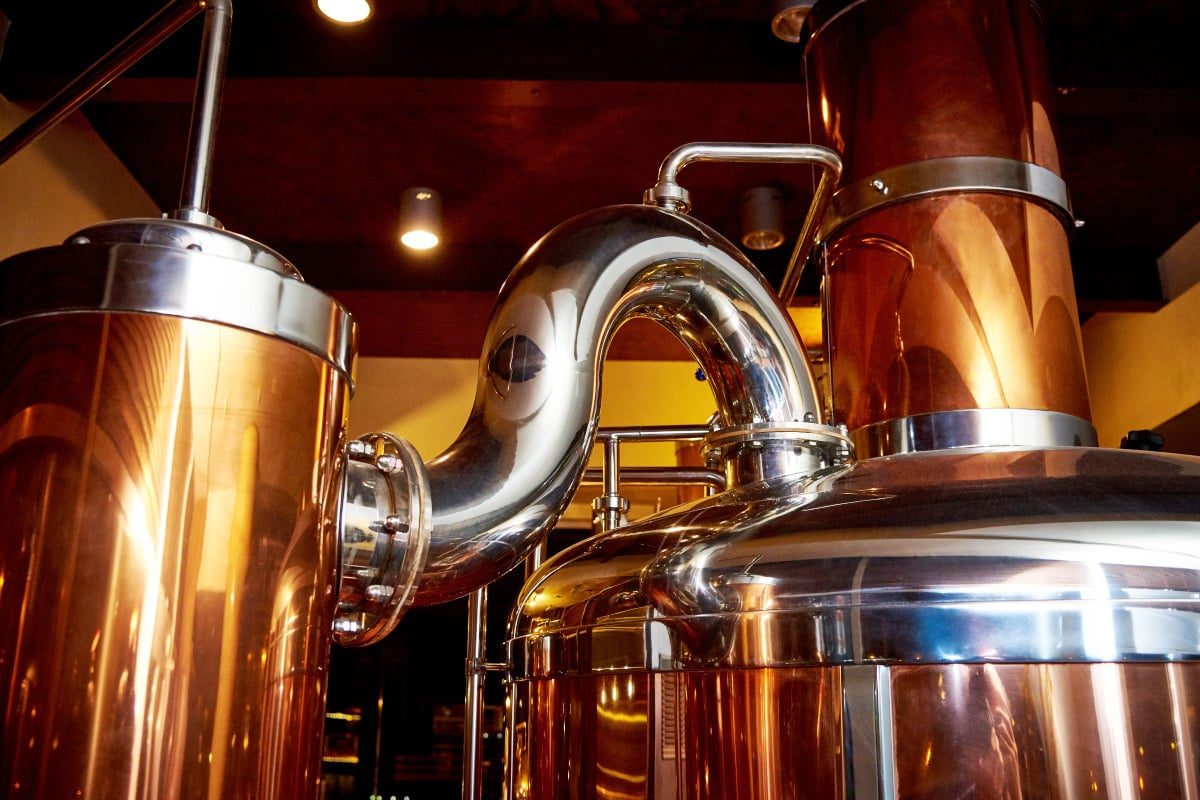
Executive Summary
Business Name and Location
Mission Statement
Products and Services
Business Objectives
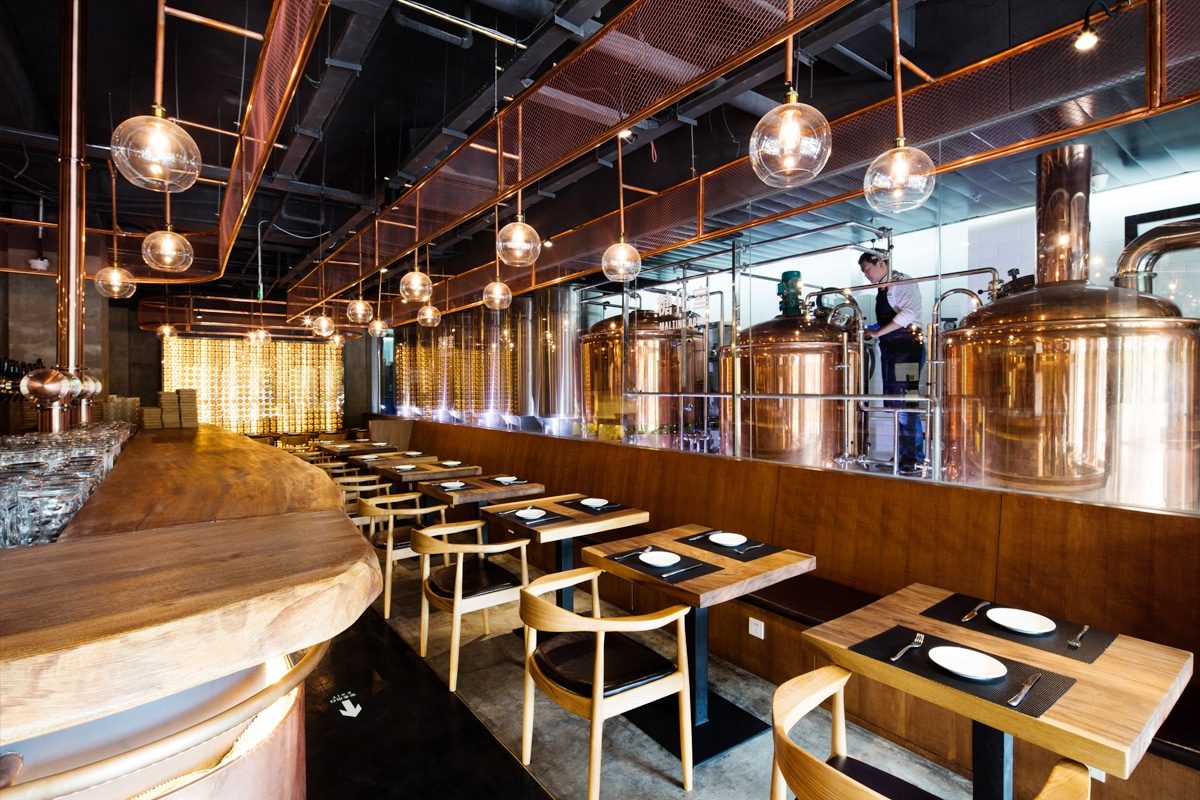
Market Analysis
Industry Overview
Target Market
Competitive Analysis
Market Needs
Identifying unmet market needs can help position your brewery to address industry gaps. Key market needs in 2024 include:
- Unique Flavor Profiles: Consumers are always on the lookout for novel and distinctive beer flavors. Offering innovative brews that incorporate local ingredients or experimental brewing techniques can set your brewery apart.
- Sustainability: There is a growing demand for environmentally friendly practices. Implementing sustainable brewing processes, such as using renewable energy sources and reducing waste, can attract eco-conscious consumers.
- Community Engagement: Craft beer enthusiasts often seek a sense of community. Hosting events, offering brewery tours, and creating a welcoming taproom environment can enhance customer loyalty and engagement.
- Health-Conscious Options: With increasing health awareness, there is a rising interest in low-calorie, low-alcohol, and non-alcoholic beer options. Expanding your product line to include these alternatives can cater to a broader audience.
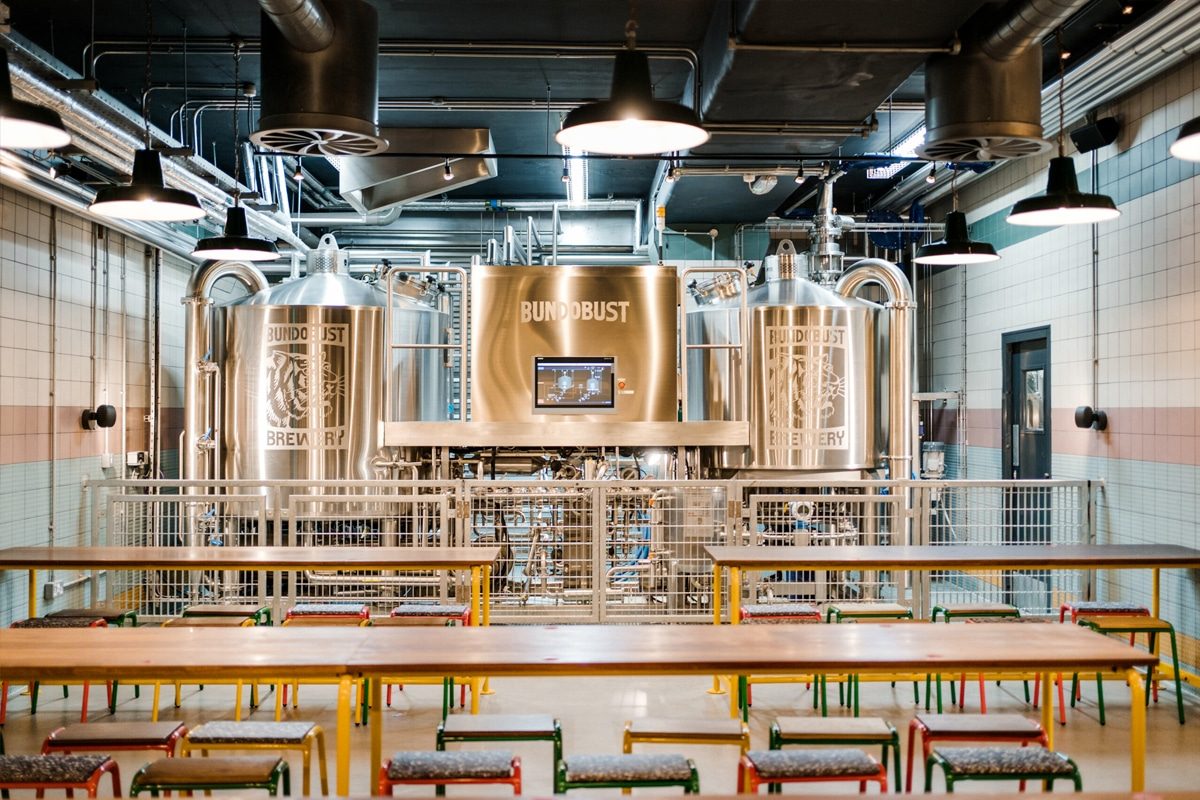
Brewery Concept and Brand Identity
Concept
Your brewery’s concept is the foundation upon which all other elements are built. It should reflect your vision, values, and the experience you want to offer your customers. Consider the following aspects when defining your brewery concept:
- Theme and Style: Decide on the overall theme and style of your brewery. Will you focus on traditional brewing methods, modern and experimental techniques, or a specific cultural or regional influence? Your theme should resonate with your target market and differentiate you from competitors.
- Ambiance and Experience: Think about the atmosphere you want to create in your brewery. Whether it’s a cozy, rustic taproom, a sleek and modern brewery, or a vibrant community hub, the ambiance should enhance the customer experience and align with your concept.
- Story and Mission: Develop a narrative that ties together your brewery’s origins, mission, and goals. This story should be authentic and relatable, helping to build an emotional connection with your audience.
Brand Identity
A strong brand image that attracts and retains customers is crucial. It encompasses your visual and verbal communication, shaping how people perceive your brewery. Key components of your brand identity include:
- Logo and Visual Elements: Design a memorable logo that represents your brewery’s concept and values. Choose a color palette, typography, and visual style that consistently appears across all marketing materials and products. These visual elements should evoke the desired emotions and associations with your brand.
- Tagline and Messaging: Create a catchy tagline that encapsulates your brand’s essence in a few words. Develop a consistent messaging framework that highlights your unique selling points, such as quality, innovation, sustainability, or community engagement. Ensure that your messaging is clear, concise, and resonates with your target audience.
- Brand Voice: Define the tone and personality of your brand. Whether it’s friendly and approachable, sophisticated and refined, or bold and adventurous, your brand voice should be reflected in all communications, from social media posts to customer interactions.
Product Line
Your product line is the tangible expression of your brewery’s concept and brand identity. It should offer a range of products that appeal to your target market while showcasing your brewing expertise and creativity. Consider the following when developing your product line:
- Core Beers: These are your flagship products that represent the heart of your brewery. They should be high-quality, consistent, and align with your overall concept. Core beers often include popular styles such as IPAs, lagers, stouts, and pale ales.
- Seasonal and Limited Editions: Introduce seasonal brews and limited-edition releases to keep your product line dynamic and exciting. These beers can celebrate local ingredients, cultural events, or brewing experiments, providing customers with new experiences and reasons to return.
- Specialty and Experimental Brews: Offer specialty and experimental brews that push the boundaries of traditional brewing. This can include barrel-aged beers, sours, wild ales, or unique flavor combinations. These products can enhance your reputation for innovation and attract adventurous beer enthusiasts.
- Non-Alcoholic and Health-Conscious Options: Given the growing demand for healthier alternatives, consider adding non-alcoholic beers, low-alcohol beers, or beers with functional ingredients to your product line. This can broaden your appeal and cater to health-conscious consumers.
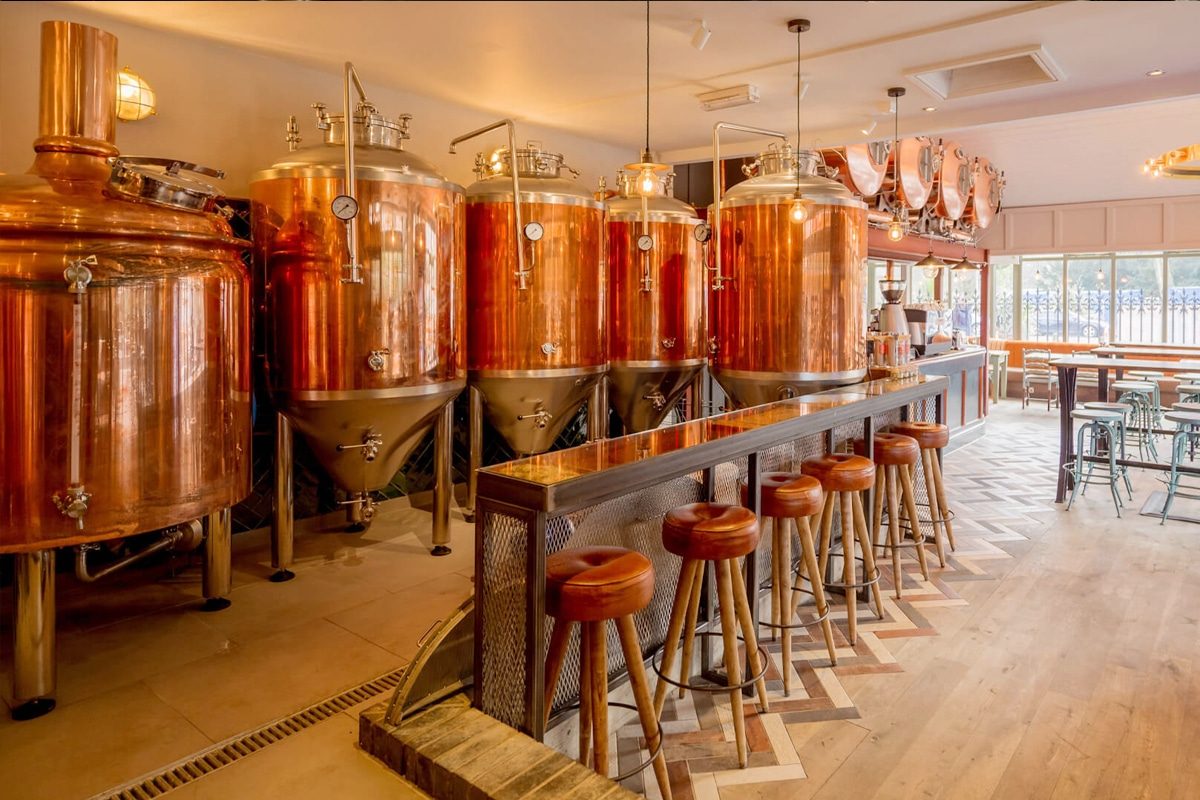
Business Structure
Ownership Structure
Sole Proprietorship
Partnership
The partnership involves two or more individuals who share ownership of the brewery. There are two main types of partnerships:
- General Partnership: All partners share equal responsibility for managing the business and are personally liable for its debts.
- Limited Partnership: Consists of general partners who manage the business and are personally liable, and limited partners who contribute capital but have limited liability and no role in daily operations.
Limited Liability Company (LLC)
Corporation
The corporation is a more complex and formal structure that is legally distinct from its owners. There are two main types of corporations:
- C Corporation: Offers strong liability protection and the ability to raise capital through stock sales but is subject to double taxation (corporate income is taxed, and shareholders also pay taxes on dividends).
- S Corporation: Similar to a C Corporation but allows profits and losses to pass through to the owners’ tax returns, avoiding double taxation. However, there are restrictions on the number and type of shareholders.
Management Team
Key Roles and Responsibilities
- CEO/General Manager: The CEO or General Manager oversees the overall operations, strategic planning, and decision-making. They ensure that the brewery meets its business objectives and maintains financial health.
- Head Brewer/Brewmaster: Responsible for the brewing process, recipe development, quality control, and production scheduling. The brewmaster ensures that the brewery produces high-quality beer consistently.
- Sales and Marketing Manager: Develops and implements sales strategies, manages distribution channels, and oversees marketing campaigns. This role can help build the brewery’s brand and expand its market presence.
- Operations Manager: Manages day-to-day operations, including supply chain management, equipment maintenance, and compliance with health and safety regulations. This role ensures that the brewery runs smoothly and efficiently.
- Finance Manager/Controller: Handles financial planning, budgeting, accounting, and financial reporting. They ensure that the brewery’s finances are in order and provide insights for strategic financial decisions.
- Taproom Manager: Manages the taproom staff, customer service, events, and daily operations within the taproom. This role helps create a warm and engaging customer experience.
Building a Strong Team
When assembling your management team, consider the following:
- Experience and Expertise: Look for individuals with relevant experience in the brewing industry and specific areas such as brewing, sales, marketing, and operations. Their expertise will be invaluable in navigating the complexities of running a brewery.
- Shared Vision and Values: Ensure that your team members share the same vision and values for the brewery. A unified approach fosters collaboration and drives the business towards common goals.
- Clear Roles and Responsibilities: Clearly define the roles and responsibilities of each team member to avoid overlaps and confusion. This clarity ensures accountability and smooth operations.
- Continuous Learning and Development: Encourage continuous learning and professional development within your team. This keeps them updated on industry trends and enhances their skills, contributing to the brewery’s success.
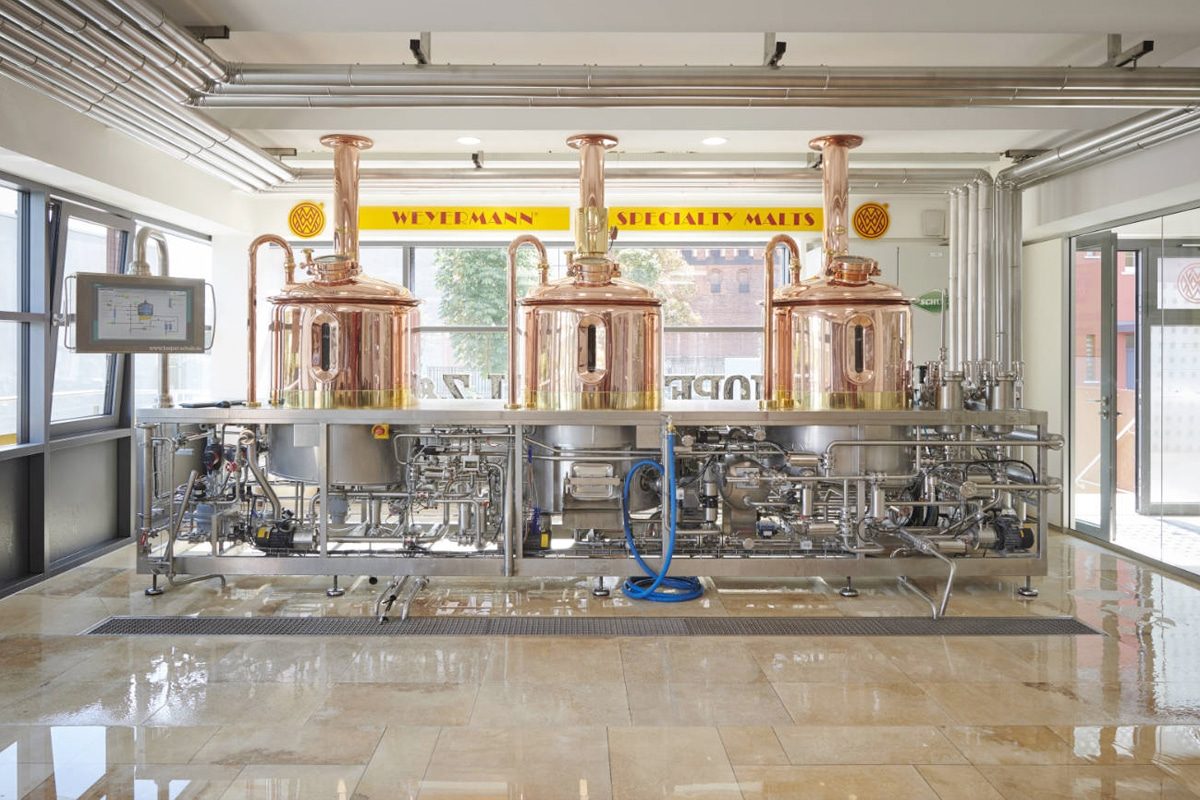
Marketing Strategy
Marketing Objectives
Marketing objectives are specific goals that align with your overall business objectives. They should be smart: Specific, Measurable, Achievable, Relevant, and Time-bound. Here are some potential marketing objectives for your brewery:
- Increase Brand Awareness: Enhance recognition and visibility of your brewery in the target market through various marketing initiatives.
- Expand Customer Base: Attract new customers within your local area and beyond by targeting different demographics and expanding your reach.
- Boost Sales: Increase sales through effective promotions, partnerships, and distribution strategies.
- Enhance Customer Engagement: Build a loyal customer base by creating interactive and engaging experiences.
- Market Penetration: Achieve a certain market share within a specific timeframe, establishing a strong presence in the craft beer industry.
Marketing Channels
Digital Marketing
- Website: Your brewery’s website is the cornerstone of your digital presence. It should be user-friendly, visually appealing, and provide essential information about your products, events, and contact details.
- Social Media: Platforms like Instagram, Facebook, Twitter, and TikTok are excellent for engaging with your audience, sharing content, and promoting your products. Use high-quality images and videos to showcase your brewery’s personality and offerings.
- Email Marketing: Build an email list and send regular newsletters to keep your audience informed about new releases, events, and promotions. Personalized and targeted emails can enhance customer loyalty.
- Search Engine Optimization (SEO): Optimize your website for search engines to increase organic traffic. Use relevant keywords, create quality content, and ensure your site is mobile-friendly.
Traditional Marketing
- Events and Festivals: Participate in local events, beer festivals, and community gatherings to increase brand visibility and directly engage with potential customers.
- Print Advertising: Use flyers, posters, and local magazine ads to reach audiences who prefer traditional media. Ensure your print materials are visually appealing and provide clear information.
- Collaborations: Partner with local businesses, such as restaurants and bars, to offer your products and co-host events. Collaborations can expand your reach and introduce your brand to new customers.
Direct Marketing
- Taproom Experience: Your taproom is a powerful marketing tool. Create a welcoming and memorable experience that encourages customers to return and bring friends.
- Merchandise: Sell branded merchandise, such as T-shirts, hats, and glassware. This not only generates additional revenue but also turns your customers into brand ambassadors.
- Loyalty Programs: Implement a loyalty program to reward repeat customers with discounts, exclusive releases, or special events. This fosters customer retention and word-of-mouth marketing.
Sales Strategy
Distribution Channels
- On-Site Sales: Maximize sales through your taproom by offering a variety of beers, including exclusive and seasonal brews. Consider hosting events and promotions to attract more visitors.
- Off-Site Sales: Expand your reach by distributing your products to local retailers, bars, restaurants, and grocery stores. Establish relationships with distributors who can help get your beers into various outlets.
- Online Sales: Leverage e-commerce to sell your products directly to consumers. Ensure your website supports online orders and shipping, and consider partnering with third-party delivery services.
Pricing Strategy
- Competitive Pricing: Research the pricing strategies of your competitors and set your prices accordingly. Ensure your prices reflect the quality and uniqueness of your products while remaining attractive to your target market.
- Promotional Pricing: Offer discounts, bundle deals, or limited-time promotions to boost sales during slower periods or to launch new products.
Sales Team
- Training and Development: Invest in training your sales team to ensure they have a deep understanding of your products and can effectively communicate your brand’s value proposition to customers.
- Incentives and Commissions: Motivate your sales team with incentives and commission structures that reward high performance and align with your sales goals.
Customer Relationship Management (CRM)
- CRM Tools: Use CRM software to manage customer interactions, track sales, and analyze customer data. This helps you understand customer preferences and tailor your marketing efforts.
- Feedback and Improvement: Regularly seek customer feedback and use it to improve your products and services. Engaging with customers and addressing their concerns can enhance loyalty and satisfaction.
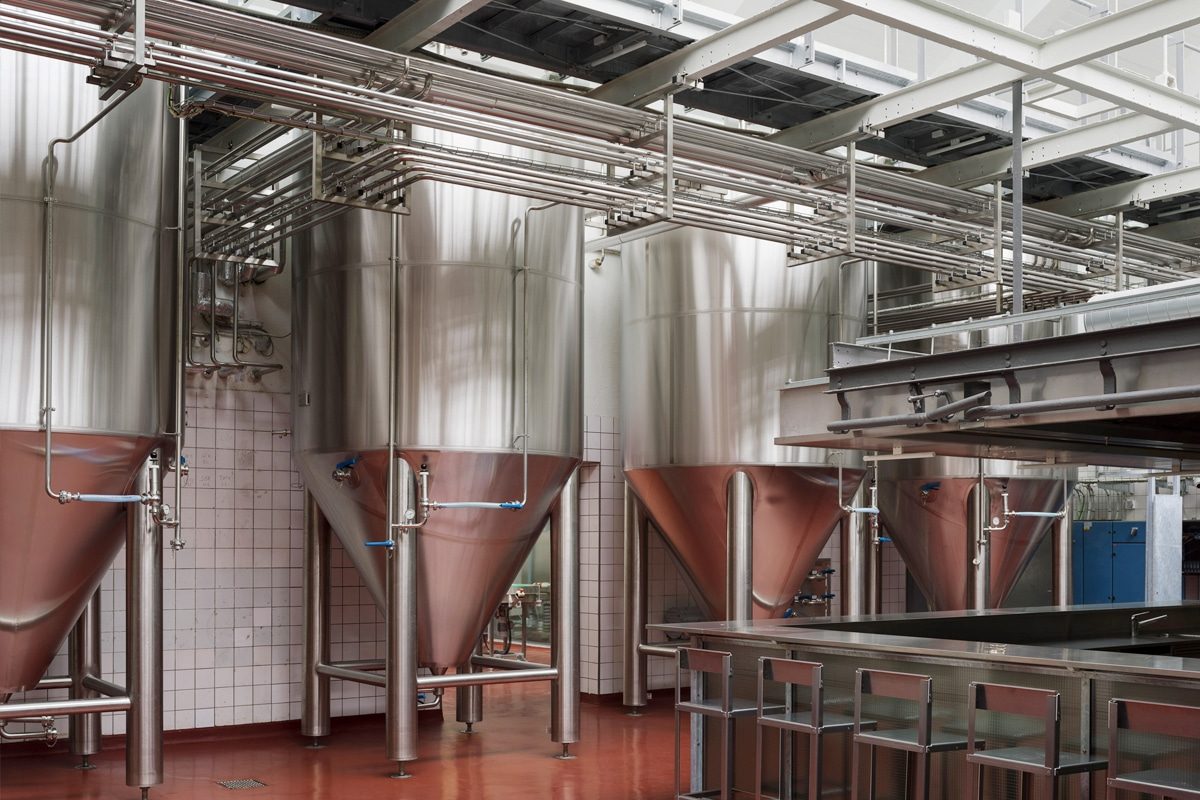
Operations Plan
Location and Facilities
Choosing the right location and setting up the right facilities can help a brewery succeed. Consider the following factors when selecting your brewery’s location:
- Accessibility: Ensure your location is easily accessible to both suppliers and customers. Proximity to major roads, public transportation, and distribution networks is essential.
- Zoning and Regulations: Verify that your chosen location complies with local zoning laws and regulations related to brewing operations. Obtain all necessary permits and licenses before commencing operations.
- Space Requirements: Assess your space needs for brewing, storage, packaging, and a taproom (if applicable). Allow for future expansion as your brewery grows.
- Infrastructure: Ensure the facility has adequate utilities, including water supply, drainage, electricity, and waste disposal systems. A reliable infrastructure is crucial for uninterrupted brewing operations.
Equipment
Investing in the right equipment is vital for efficient production and high-quality beer. Your equipment needs will vary depending on the scale and type of your brewery, but generally include:
- Brewhouse: This includes the mash tun, lauter tun, brew kettle, and whirlpool. Choose equipment that suits your production capacity and allows for flexibility in brewing different types of beer.
- Fermentation Tanks: Stainless steel fermentation tanks of various sizes are necessary for fermenting and conditioning your beer. Consider the number and capacity of tanks based on your production goals.
- Cooling System: An efficient glycol cooling system is essential for temperature control during fermentation and storage.
- Cleaning and Sanitization: Invest in a CIP (clean-in-place) system and other cleaning tools to maintain hygiene and quality control.
- Packaging Equipment: Depending on your distribution plan, you may need bottling, canning, and kegging equipment. Choose systems that match your production volume and packaging preferences.
- Lab Equipment: Basic laboratory equipment for quality testing, such as pH meters, hydrometers, and microscopes, ensures consistency and quality in your brews.
Production Process
Detailing your production process helps streamline operations and maintain consistency. Key steps in the brewing process include:
- Recipe Development: Start with creating and testing recipes to define your core product line. Ensure that each recipe is scalable to your production level.
- Brewing: This involves mashing, lautering, boiling, and whirlpooling. Precisely control each step to achieve the desired flavor profile and quality.
- Fermentation: Transfer the wort to fermentation tanks, pitch yeast, and monitor fermentation conditions. Manage temperature and pressure to ensure optimal fermentation.
- Conditioning and Packaging: After fermentation, condition the beer to enhance flavors and carbonation. Package the beer in a bright tank, following strict quality control protocols.
- Quality Control: Implement a quality control system to test and monitor the beer at various stages. Regularly check for consistency, flavor, and compliance with safety standards.
Suppliers
Establishing reliable supplier relationships is crucial for maintaining a steady supply of raw materials and equipment. Key considerations include:
- Raw Materials: Identify suppliers for malt, hops, yeast, and adjuncts. Choose suppliers based on quality, consistency, and reliability. Consider local suppliers to reduce costs and support local agriculture.
- Packaging Materials: Secure sources for bottles, cans, labels, and packaging materials. Ensure that your packaging meets quality standards and reflects your brand identity.
- Equipment Suppliers: Work with reputable suppliers for brewing equipment, ensuring they offer installation support, training, and maintenance services.
- Logistics Providers: Partner with logistics companies for the efficient transportation of raw materials and finished products. Ensure they can handle the specific needs of your brewery, such as refrigerated transport for perishable goods.
Staffing
Building a skilled and dedicated team is essential for the successful operation of your brewery. Key roles and responsibilities include:
- Head Brewer/Brewmaster: Oversees the brewing process, recipe development, and quality control. This role requires extensive experience and expertise in brewing.
- Assistant Brewers: Support the head brewer in day-to-day brewing operations, including cleaning, maintenance, and monitoring fermentation.
- Operations Manager: Manages overall operations, including supply chain, production scheduling, and compliance with health and safety regulations.
- Sales and Marketing Team: Develops and implements sales strategies, manages customer relationships, and promotes the brand through various channels.
- Taproom Staff: If you have a taproom, hire knowledgeable and friendly staff to serve customers, handle sales, and create a welcoming environment.
- Quality Control Specialist: Ensures that all products meet quality standards through regular testing and monitoring.
- Administrative Staff: Handles administrative tasks such as bookkeeping, payroll, and regulatory compliance.
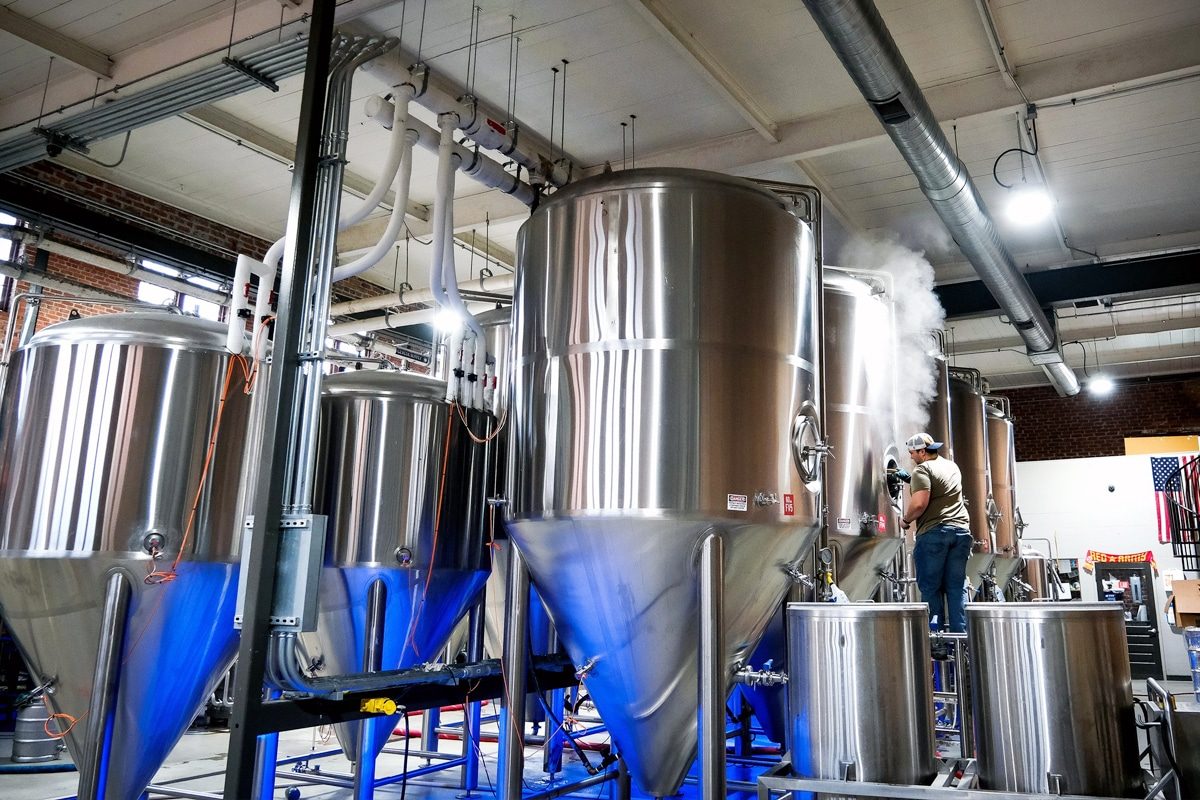
Product Development
Recipe Development
Recipe development is the foundation of your brewery’s product line. Crafting unique and flavorful beers requires creativity, knowledge, and meticulous testing. Here’s how to approach recipe development:
- Market Research: Begin by researching current trends in the craft beer industry. Identify popular styles, emerging flavors, and customer preferences. This information will help you create recipes that cater to your target market.
- Ingredient Selection: Choose high-quality ingredients, including malt, hops, yeast, and adjuncts (such as fruits, spices, and herbs). Experiment with different combinations to achieve desired flavors, aromas, and mouthfeel.
- Small-Batch Testing: Start with small-batch brews to test and refine your recipes. This allows you to experiment with different variables without committing significant resources.
- Sensory Evaluation: Conduct taste tests with your team and a select group of customers or beer enthusiasts. Gather feedback on flavor, aroma, appearance, and overall impression. Use this feedback to tweak and perfect your recipes.
- Documentation: Keep detailed records of your recipes, including ingredient quantities, brewing process, and any adjustments made. This documentation ensures consistency and helps replicate successful brews.
Quality Control
Maintaining high-quality standards is crucial for building a reputable brand and ensuring customer satisfaction. Implementing a rigorous quality control program helps you achieve consistency and address any issues promptly.
- Standard Operating Procedures (SOPs): Develop SOPs for every step of the brewing process, from raw material handling to packaging. These procedures should outline best practices for maintaining quality and hygiene.
- Laboratory Testing: Invest in basic laboratory equipment to conduct regular tests on your beer. Key tests include measuring pH levels, gravity readings, and microbiological analysis to detect any contamination.
- Sensory Analysis: Conduct regular sensory evaluations throughout the brewing process. Train your team to identify any off-flavors or inconsistencies. Sensory analysis complements laboratory testing and provides a holistic view of your beer’s quality.
- Batch Tracking: Implement a batch tracking system to monitor the production and quality of each batch. This system helps identify any deviations from the standard and trace any issues back to their source.
- Customer Feedback: Encourage customer feedback and use it to improve your products. Address any quality issues promptly and transparently to build trust with your customers.
Scaling Production
Scaling production is a critical step as your brewery grows. It involves increasing your brewing capacity while maintaining quality and consistency.
- Capacity Planning: Assess your current production capacity and forecast future demand. Determine the necessary equipment, space, and resources needed to scale up. Plan for incremental expansion to manage costs and risks effectively.
- Equipment Upgrades: Invest in larger brewing systems, additional fermentation tanks, and efficient packaging lines. Consider automation options to streamline operations and reduce manual labor.
- Process Optimization: Optimize your brewing process to improve efficiency and reduce waste. Implement lean manufacturing principles to identify and eliminate bottlenecks.
- Quality Assurance in Scaling: Ensure that quality control measures are scalable. This includes maintaining SOPs, expanding laboratory testing capabilities, and continuing rigorous sensory evaluations. Consistency in quality is paramount as production volumes increase.
- Supply Chain Management: Strengthen relationships with suppliers to ensure a reliable supply of high-quality raw materials. As your production scales, negotiate bulk purchasing agreements to reduce costs.
- Staff Training: Train your team to handle the increased production volume and operate new equipment. Cross-train staff to ensure flexibility and continuity in operations.
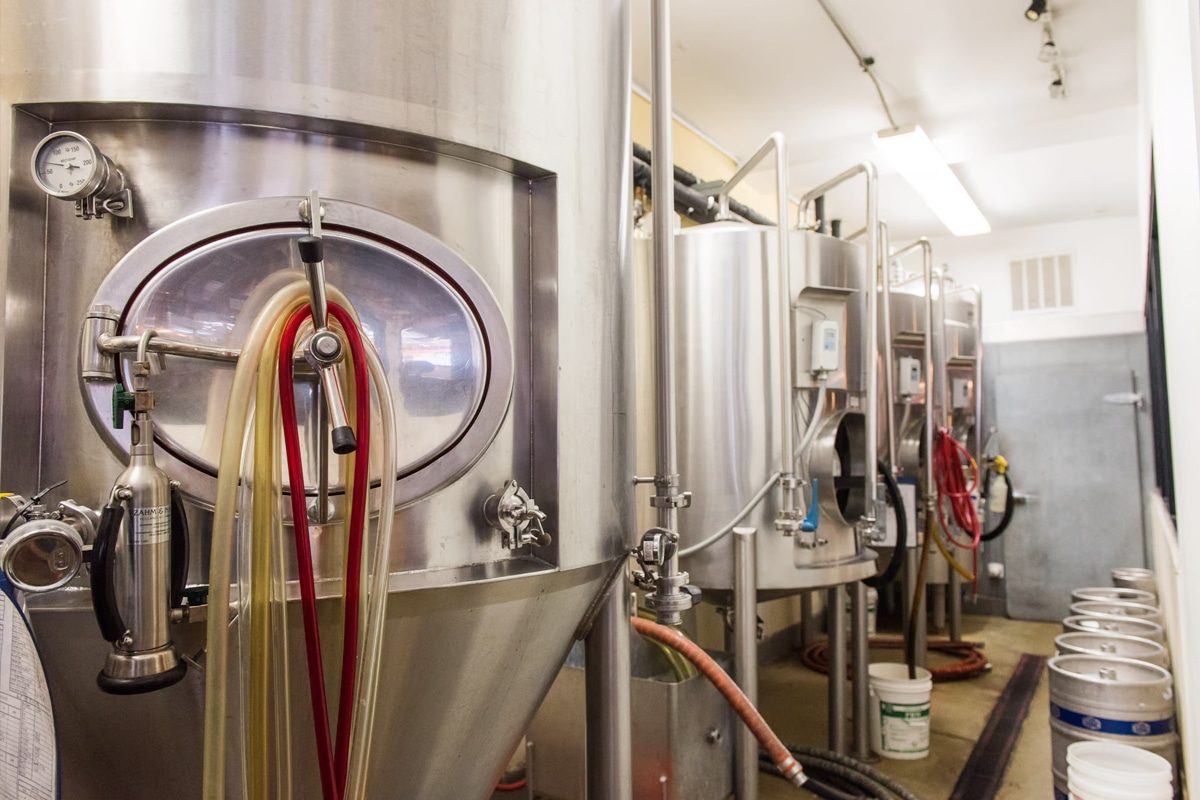
Financial Plan
Startup Costs
Startup costs are the initial expenses required to launch your brewery. These costs vary depending on the size and scale of your operation but typically include:
- Facility Costs: Leasing or purchasing a suitable location, including any renovations or build-outs required to accommodate brewing operations.
- Equipment: Purchasing brewing equipment such as brewhouse systems, fermentation tanks, cooling systems, packaging machines, and laboratory equipment.
- Licenses and Permits: Obtaining necessary licenses and permits to operate legally. This includes federal, state, and local regulations specific to breweries.
- Initial Inventory: Procuring raw materials such as malt, hops, yeast, and adjuncts. This also includes packaging materials like bottles, cans, and labels.
- Utilities and Infrastructure: Setting up utilities, including water, electricity, and waste management systems. Ensure infrastructure supports your brewing operations.
- Marketing and Branding: Developing your brand identity, creating marketing materials, and launching initial marketing campaigns to build awareness.
- Professional Services: Hiring legal, accounting, and consulting services to assist with business setup, regulatory compliance, and financial planning.
- Working Capital: Allocating funds for operational expenses during the initial months of business until the brewery starts generating sufficient revenue.
Revenue Projections
Revenue projections estimate the income your brewery will generate over a specific period, usually three to five years. These projections help you set realistic financial goals and measure your brewery’s performance. Key factors to consider include:
- Product Pricing: Determine the pricing strategy for your beer. Consider factors such as production costs, market competition, and perceived value.
- Sales Volume: Estimate the quantity of beer you expect to sell. Consider different sales channels, such as taproom sales, retail distribution, and online sales.
- Seasonality: Account for seasonal variations in sales, which can impact revenue. For example, the summer months might see higher sales due to increased demand for beer.
- Growth Rate: Project your sales growth over time. Factor in marketing efforts, brand recognition, and market expansion strategies.
Expense Projections
Expense projections estimate the costs your brewery will incur during operations. These projections help you manage cash flow and identify areas for cost control. Key expenses include:
- Cost of Goods Sold (COGS): Direct costs of producing beer, including raw materials, packaging, and production labor.
- Operating Expenses: Recurring expenses necessary for daily operations, such as utilities, rent, salaries, insurance, and maintenance.
- Marketing and Advertising: Ongoing costs associated with promoting your brewery, including digital marketing, events, sponsorships, and promotional materials.
- Distribution Costs: Expenses related to distributing your beer to retailers, bars, restaurants, and customers. This includes transportation, logistics, and distributor fees.
- Administrative Expenses: Costs for administrative functions such as office supplies, software, professional services, and regulatory compliance.
Break-Even Analysis
A break-even analysis determines the point at which your brewery’s revenue equals its expenses, resulting in neither profit nor loss. This analysis helps you understand the minimum sales volume required to cover costs and achieve profitability. To perform a break-even analysis:
- Calculate Fixed Costs: Total fixed costs are expenses that do not vary with production volume, such as rent, salaries, and insurance.
- Determine Variable Costs: Variable costs change with production volume, such as raw materials and packaging costs.
- Set Average Selling Price: Determine the average price at which you will sell your beer.
- Compute Break-Even Point: Break-Even Point (in units)= Fixed Costs / Average Selling Price−Variable Cost per Unit
Funding Requirements
Securing adequate funding is crucial for covering startup costs and supporting initial operations. Outline your funding requirements clearly to attract potential investors and lenders. Key components include:
- Total Funding Needed: Calculate the total amount of capital required to cover startup costs and initial working capital. Include a buffer for unexpected expenses.
- Funding Sources: Identify potential funding sources, such as personal savings, bank loans, investors, crowdfunding, and grants. Diversify funding sources to mitigate risk.
- Use of Funds: Provide a detailed breakdown of how the funds will be used, including facility costs, equipment purchases, initial inventory, marketing, and working capital.
- Return on Investment (ROI): Outline the expected return on investment for potential investors. Highlight projected profitability, growth potential, and exit strategies.
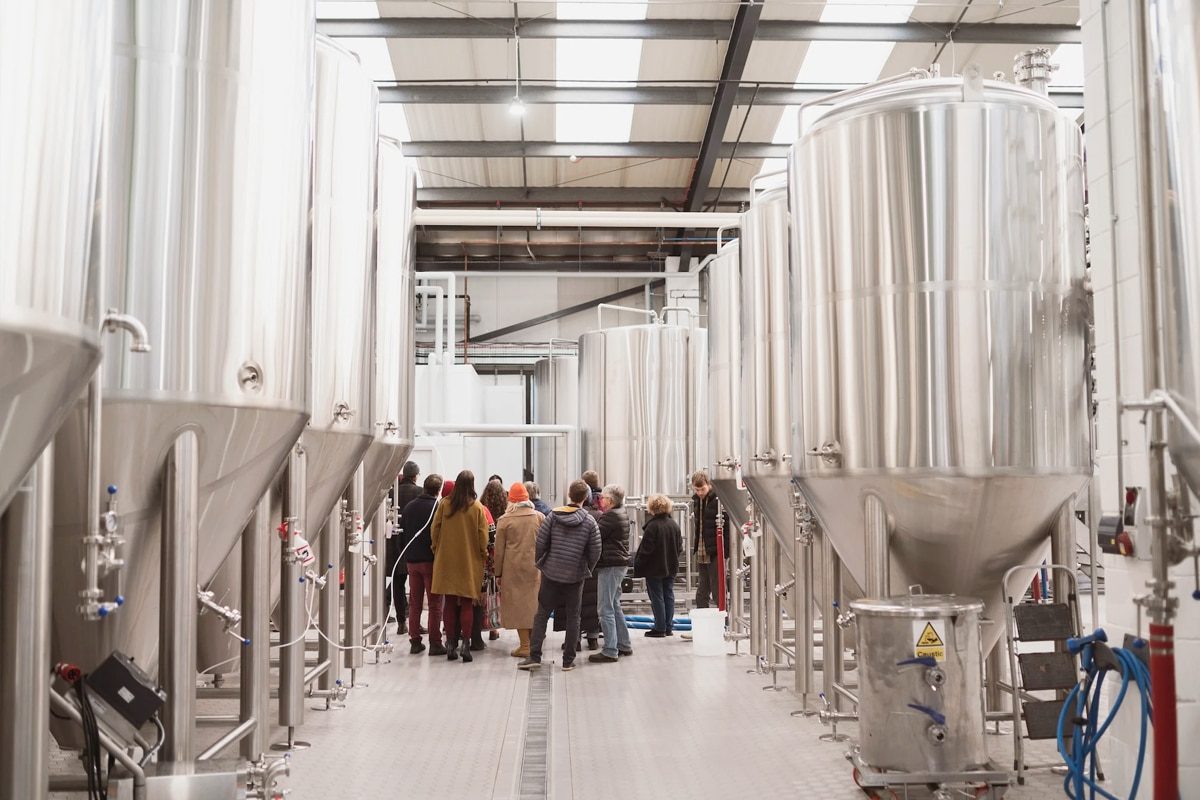
Risk Management
Market Risks
Market risks involve changes in the market environment that could impact your brewery’s ability to attract and retain customers. Key market risks include:
- Consumer Preferences: Shifts in consumer tastes and preferences can affect demand for your products. To mitigate this risk, stay attuned to industry trends, gather customer feedback regularly, and be flexible in adapting your product offerings.
- Competition: The craft beer market is highly competitive, with new breweries entering the market regularly. Differentiate your brand through unique products, exceptional quality, and strong customer relationships to stay ahead of competitors.
- Economic Downturns: Economic recessions can reduce consumers’ discretionary spending, impacting beer sales. Diversify your product range to include lower-cost options and create promotions to maintain sales during tough economic times.
- Seasonality: Beer sales can be seasonal, with higher demand in certain periods, such as summer or during holidays. Plan for these fluctuations by adjusting production schedules and marketing efforts accordingly.
Operational Risks
Operational risks are associated with the internal processes and day-to-day activities of your brewery. Key operational risks include:
- Production Issues: Equipment failures, raw material shortages, and production errors can disrupt operations. Implement a preventive maintenance schedule, maintain a buffer stock of key materials, and have contingency plans for production downtime.
- Quality Control: Maintaining consistent quality is essential for customer satisfaction and brand reputation. Develop stringent quality control protocols, conduct regular testing, and train staff on quality standards.
- Supply Chain Disruptions: Delays or issues with suppliers can impact your ability to produce and deliver beer. Establish relationships with multiple suppliers, diversify sourcing, and develop contingency plans for critical supply chain components.
- Health and Safety: Ensuring a safe working environment is crucial to prevent accidents and comply with regulations. Implement comprehensive health and safety training for all employees, regularly inspect the facility, and address any hazards promptly.
Financial Risks
Financial risks pertain to the monetary aspects of running your brewery. Key financial risks include:
- Cash Flow Management: Poor cash flow management can lead to liquidity issues, affecting your ability to pay bills and invest in growth. Implement robust financial planning, monitor cash flow regularly, and maintain a reserve fund for emergencies.
- Funding and Investment: Securing sufficient funding is crucial for startup and growth. Diversify your funding sources, clearly outline funding requirements and use of funds, and develop strong relationships with investors and lenders.
- Credit Risk: Extending credit to customers or relying on distributors can pose a risk if payments are delayed or defaulted. Conduct credit checks on new customers, set credit limits, and follow up promptly on overdue payments.
- Economic Conditions: Broader economic conditions, such as inflation or changes in interest rates, can impact your costs and profitability. Regularly review and adjust your pricing strategy and cost structure to mitigate these impacts.
Compliance Risks
Compliance risks involve adhering to laws, regulations, and industry standards. Key compliance risks include:
- Licensing and Permits: Operating without the necessary licenses and permits can result in fines, legal issues, and business closure. Stay informed about local, state, and federal regulations, and ensure all required licenses and permits are up to date.
- Health and Safety Regulations: Non-compliance with health and safety regulations can lead to fines and operational disruptions. Regularly review and comply with regulations, and conduct audits to ensure adherence.
- Environmental Regulations: Breweries must comply with environmental regulations related to waste disposal, water usage, and emissions. Implement sustainable practices, monitor environmental impact, and ensure compliance with relevant regulations.
- Labeling and Advertising Laws: Misleading or non-compliant labeling and advertising can result in legal issues and damage your reputation. Ensure all labels and marketing materials meet regulatory standards and accurately represent your products.
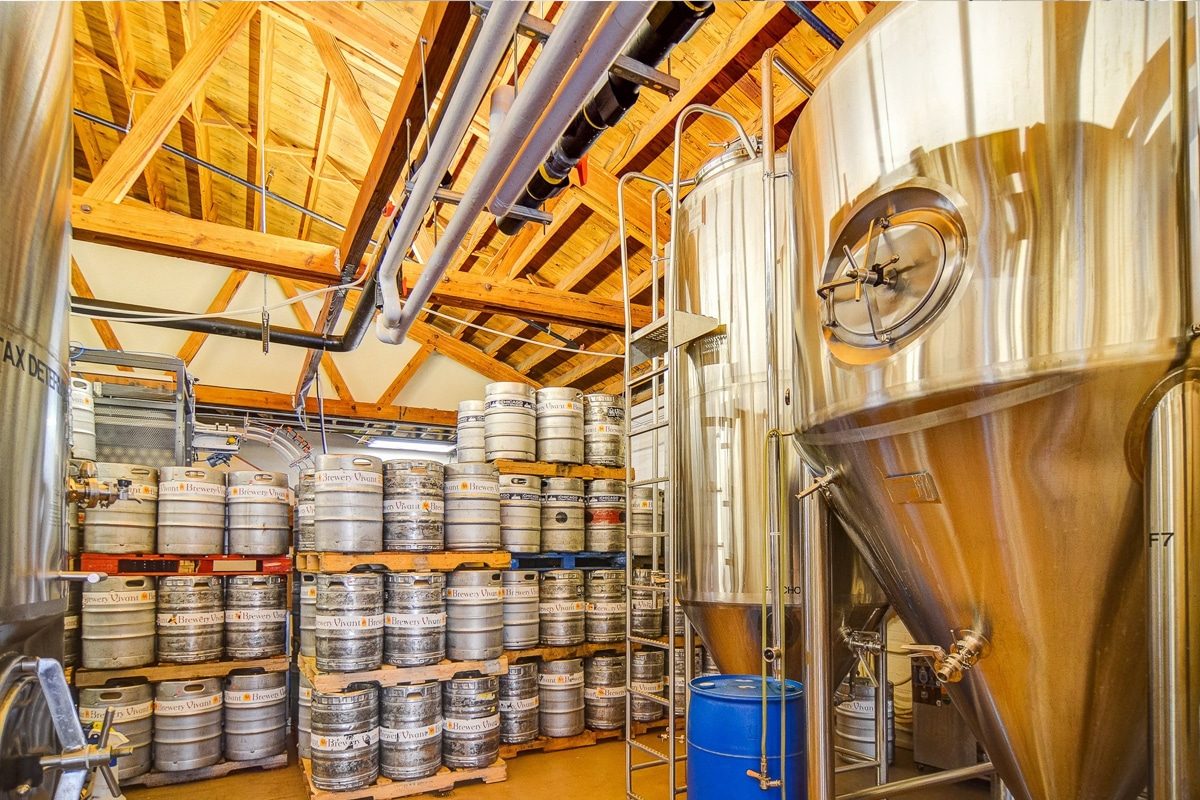
Appendices
Resumes of Key Personnel
Include detailed resumes for the key members of your management team. These resumes should highlight the relevant experience, skills, and qualifications that make them well-suited to their roles within the brewery. Key elements to include are:
- Professional Experience: Outline previous positions held, responsibilities, and achievements, particularly those related to the brewing industry, business management, or sales and marketing.
- Education: Detail educational background, including degrees, certifications, and relevant courses or training programs.
- Skills and Expertise: Highlight specific skills and areas of expertise, such as brewing techniques, quality control, financial management, marketing strategies, or leadership.
- Professional Achievements: Include any awards, recognitions, or significant accomplishments that demonstrate competence and success in their respective fields.
Legal Documents
Providing the necessary legal documents helps establish the legitimacy and compliance of your brewery. Key documents to include are:
- Business License: A copy of your business license proving that your brewery is legally registered and allowed to operate in your location.
- Permits: Copies of all relevant permits, such as brewing permits, health permits, and alcohol distribution permits, that are required by local, state, and federal authorities.
- Insurance Policies: Documentation of insurance coverage, including general liability, property, workers’ compensation, and any other relevant policies.
- Partnership Agreements: If applicable, include agreements with business partners, investors, or stakeholders that outline roles, responsibilities, and ownership stakes.
- Leases and Contracts: Copies of lease agreements for your brewery location, as well as any contracts with suppliers, distributors, or service providers.
Detailed Financial Statements
Detailed financial statements provide a clear and transparent view of your brewery’s financial health and projections. Include the following documents:
- Income Statement: A projected income statement outlining expected revenues, costs, and profits over a specific period, typically three to five years.
- Balance Sheet: A projected balance sheet showing your brewery’s assets, liabilities, and equity at different points in time.
- Cash Flow Statement: A projected cash flow statement detailing the inflows and outflows of cash, helping to predict liquidity and financial stability.
- Break-Even Analysis: A detailed breakdown of your break-even analysis, showing at what point your brewery will become profitable based on projected sales and expenses.
- Capital Requirements and Use of Funds: A detailed account of the startup costs, funding requirements, and how the funds will be allocated across different aspects of the business.
Market Research Data
Market research data supports your business plan by providing evidence-based insights into your target market, industry trends, and competitive landscape. Include:
- Industry Reports: Summaries of industry reports that highlight the growth potential, market size, and key trends in the craft beer market.
- Customer Surveys: Results from customer surveys or focus groups that provide insights into consumer preferences, buying behaviors, and demand for different types of beer.
- Competitive Analysis: Detailed analysis of your competitors, including their strengths, weaknesses, market positioning, and product offerings.
- Demographic Data: Information on the demographics of your target market, such as age, gender, income level, and geographic location, that supports your marketing and sales strategies.
- Sales Projections: Data-driven sales projections based on market research, including potential market share, growth rates, and revenue expectations.
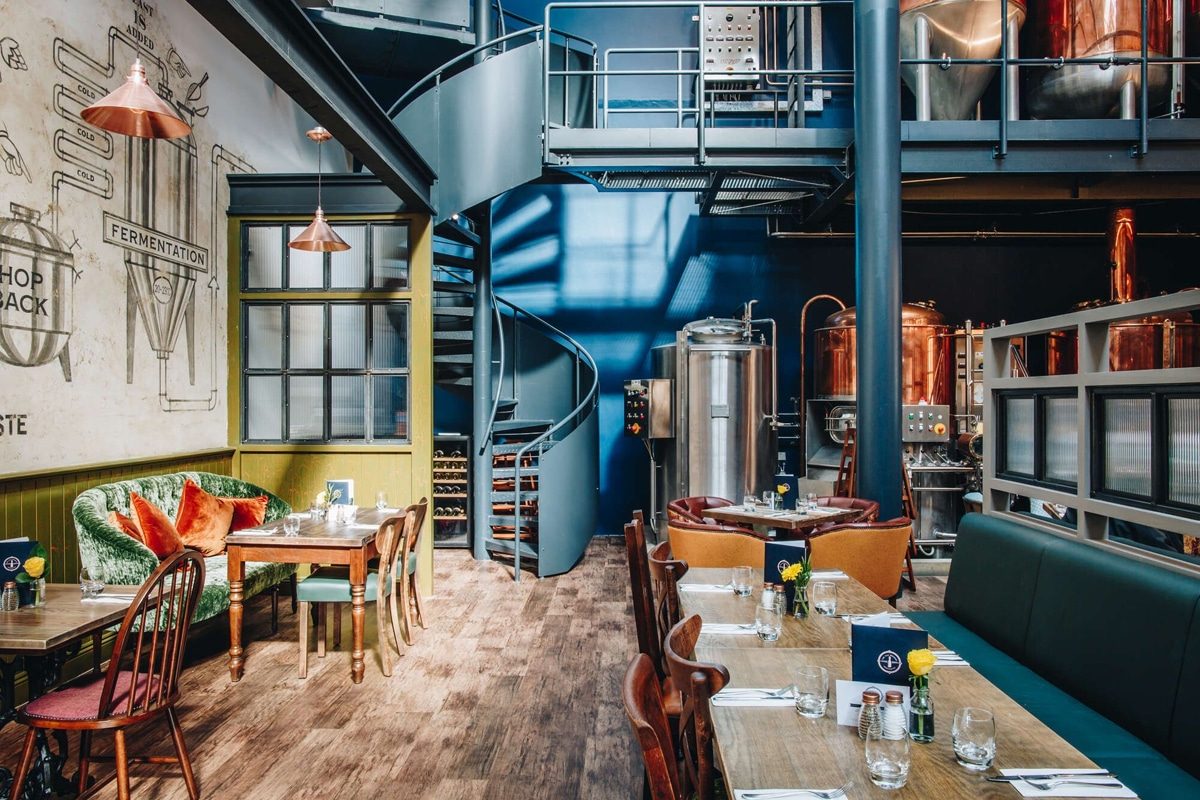
Summarize
